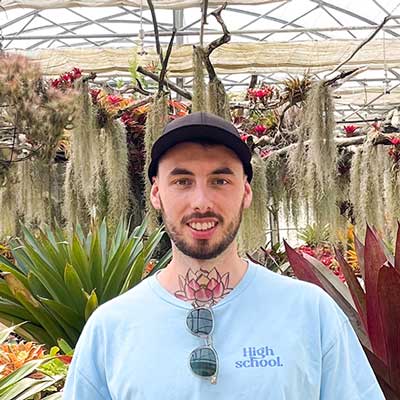Introduction
Homemade liquid fertilisers are a quick and easy way to boost the growth and health of your plants while saving money and reducing wastage. There are many benefits of using liquid fertilisers for your plants such as that they are easier to apply; they are easier to regulate the dosage and get an even application; they’re readily available for your plants to absorb the nutrients as soon as they hit the soil, and they are generally cheaper. Here are five ways to make your own liquid fertiliser.
1. Banana Peels -
After you’ve finished eating your banana, instead of throwing the peel away, you can keep it and use it as liquid fertiliser for your indoor plants. Bananas are naturally high in potassium, for strong stems and fast growth, and phosphorus, for forming new roots and flowers, both of which plants need to thrive.
There are two different ways you can use banana peels:
- Soak the peels in water for between 24-48 hours - you will know when it is ready by the colour of the water, turning a brown colour. Strain the peels and use the liquid the next time you water your plants.
- Alternatively, you can cut up the peel into small pieces and mix them into the soil, although this is more suitable for outdoor gardens rather than small indoor plant pots. As the banana peel decomposes it releases the nutrients into the soil for the plants to absorb.
2. Coffee-
I bet you didn’t know that the waste from your morning cuppa be used to boost your plants! Coffee grounds are naturally rich in nitrogen and organic matter, making it a perfect addition for plants. Not only does it give plants a vital nutrient but it can also help improve soil aeration, drainage, and encourage beneficial microorganisms.
- Firstly, you can simply sprinkle the grounds lightly on the top of the soil
- Or, you can mix the grounds with some filtered water and pour the remaining liquid fertiliser around the base of your plants.
Some coffee can be acidic so be careful how much you apply.
3. Egg Shells -
Next time you have breakfast, save the egg shells, they might just come in handy for you plants. Eggshells are a natural source of calcium, magnesium, and phosphorus, which are all vital for healthy plant growth, in particular for root growth. This egg shell liquid fertiliser can be used on both outdoor and indoor plants as an inexpensive option for reducing waste and saving money.
Egg shells can be used prepared in three different ways:
- Crush the egg shells and sprinkle them around the plants
- Dry and grind the shells into a fine powder and incorporate into the soil
- Soak the shells in water for at least 24 hours, strain them, and use the liquid to water your plants.
4. Seaweed -
Many products use seaweed as a natural fertiliser due to its organic matter and nutrient content such as iodine, magnesium, and phytonutrients. It can be used to improve aeration, soil structure, and pest control.
Collect seaweed that has washed up on the beach and use it fresh for best results:
- Place seaweed on top of the soil as a mulch and weed suppression
- Alternatively, mix with water and allow the nutrients to leach out and use the liquid when watering plants or as a foliar spray.
5. Grass -
Any grass clippings or other weeds can be used as homemade liquid fertiliser. They contain the main three macronutrients for plants, nitrogen, phosphorus, and potassium. The easiest way to use grass is to add it to the soil and let it decompose or add to your compost pile for some extra organic matter. You can also use other weeds along with grass but make sure they haven’t been sprayed.
- Mix clippings in a bucket of water and leave for 24-48 hours. Drain the solid material and use the remaining liquid fertiliser on all your plants.
- Place grass clippings into the soil around your plants and dig it in and water it. The grass will slowly decompose and release nutrients on the plants roots.
- Add the grass to a compost pile



